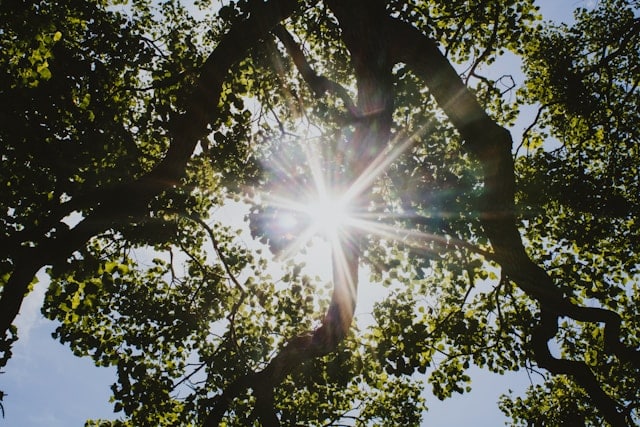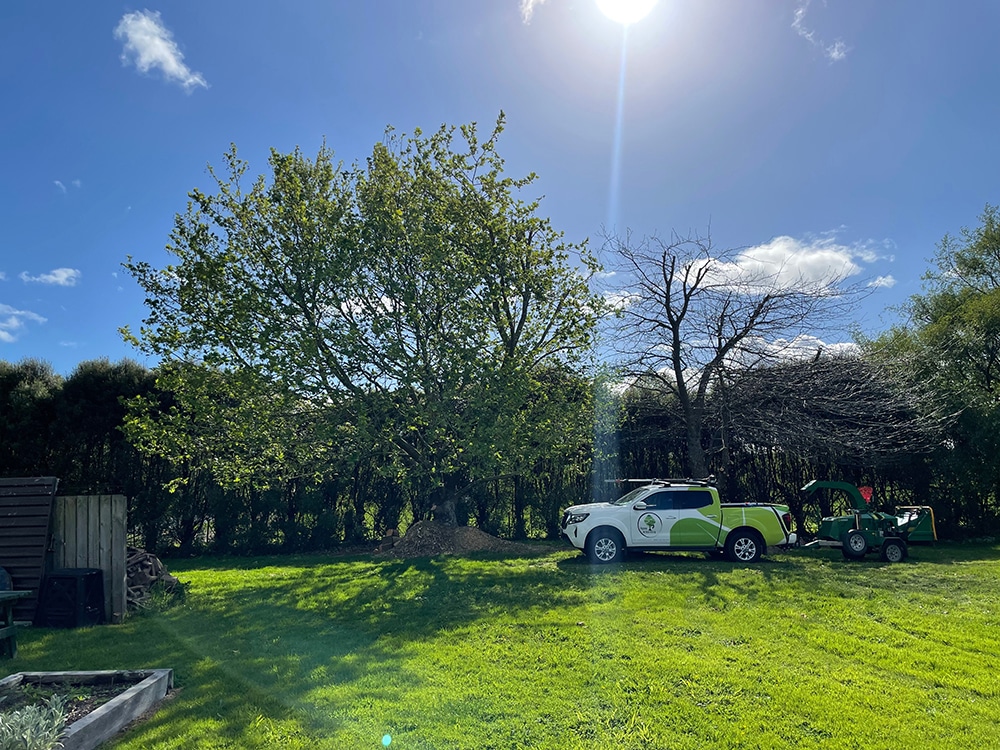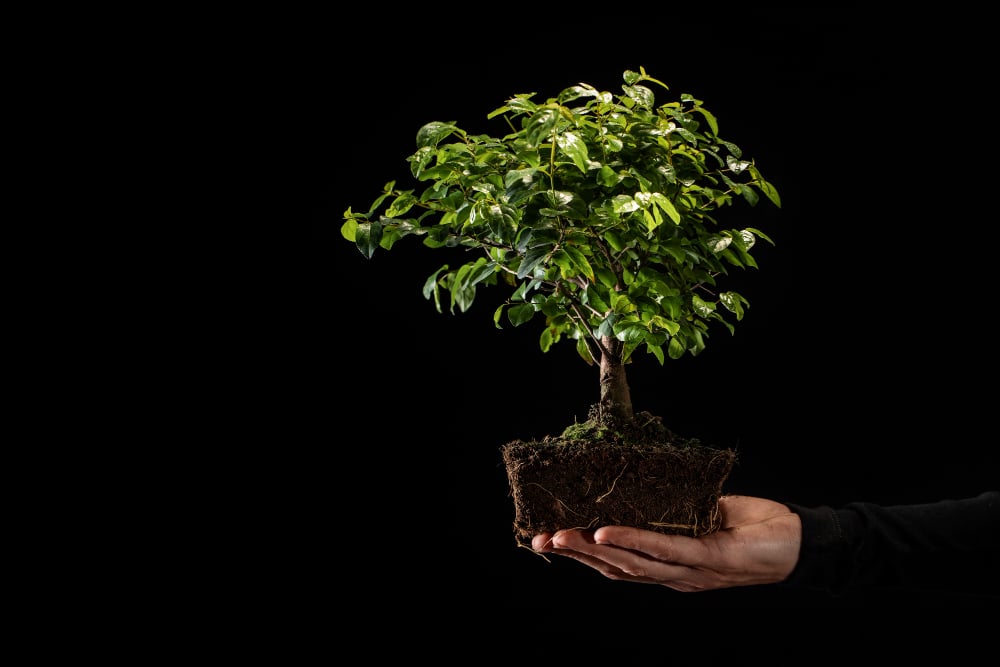
In the lush landscapes of New Zealand, selecting suitable trees for small gardens is more than a mere aesthetic choice—it’s an essential aspect of garden design.
This article explores the top 10 small trees ideally suited for limited spaces in New Zealand gardens. We’ll discuss these:
- Japanese Maple
- Crabapple
- Michelia
- Orange Jessamine
- Cycads
- Camellia Tree
- Blue Star Creeper
- Silver Birch
- Kōwhai
These carefully chosen varieties enhance your garden’s visual appeal and cater to practical aspects such as shade, privacy, and even wildlife attraction.
So, let’s start exploring Small Trees in New Zealand.
Criteria for Selecting Small Trees for NZ Gardens
When selecting trees for confined spaces, it’s crucial to consider factors such as growth rate, root system, and canopy size. Trees that grow too large may cause issues with neighbors or local council regulations.
Equally important is choosing species that thrive in New Zealand’s varied climates and soil types. We suggest picking an evergreen tree rather than a deciduous tree so your garden can look good throughout the year.
Top 10 Small Trees for NZ Gardens
Let’s check out the top 10 small trees for NZ gardens:
1) Japanese Maple
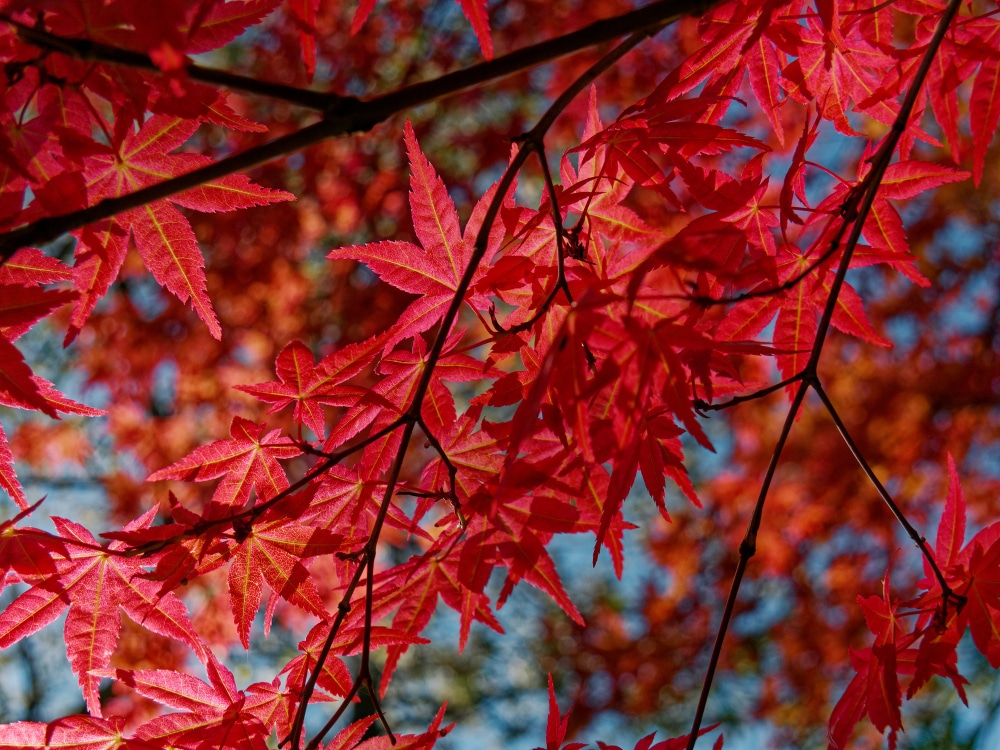
Description: The Japanese Maple, stunning autumn colours ranging from bright reds to deep purples, is a visual delight in any garden. Its compact growth habit, typically reaching no more than 6-8 metres in height, makes it particularly suitable for smaller spaces where a full-sized tree would be overwhelming.
Climate Suitability: This small tree is best suited to areas of New Zealand where it can be sheltered from the harsher effects of the sun and strong winds. It benefits from a position that receives partial shade in warmer regions, especially hot afternoons.
Benefits: The Japanese Maple is not just known for its autumn colours; it is a year-round performer with its graceful structure and finely-cut leaves, adding elegance to any garden. In spring, its new foliage often emerges in bright colours; in summer, the lush green provides an excellent, calming effect.
Care and Maintenance: Japanese Maples prefer well-drained, slightly acidic soil and require regular watering, especially during dry spells. They also benefit from mulching to retain soil moisture and protection from extreme weather conditions. Pruning, though minimal, is best done in the late autumn or winter to shape the tree and remove any dead or crossing branches.
2) Crabapple
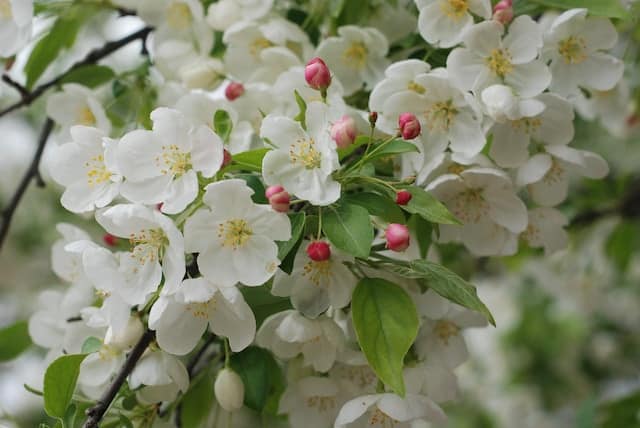
Description: The Crabapple tree is renowned for its vibrant spring blossoms in shades of white, pink, and red, followed by small, ornamental fruits varying in colour from yellow to deep red. Flowering occurs in spring.
Climate Suitability: Exceptionally hardy, Crabapple trees are well-suited to various climates, demonstrating versatility in cold and temperate conditions.
Benefits: Besides being a haven for various bird species, the fruits of the Crabapple are not only decorative but can also be used in culinary creations, such as jellies and preserves.
Care and Maintenance: Regular pruning helps maintain its attractive shape and encourages healthier growth and abundant flowering. Overall, it’s an excellent tree for your garden.
3) Michelia
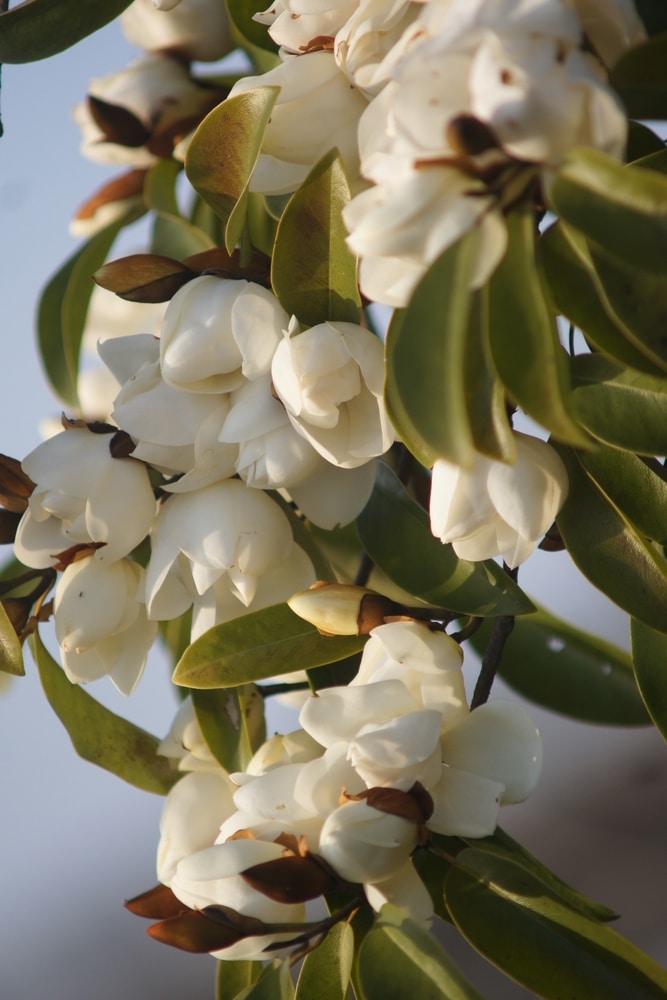
Description: Michelia, part of the Magnolia family, is known for its fragrant, creamy-white flowers and glossy evergreen leaves.
Climate Suitability: Thrives in mild, temperate climates with protection from harsh frost.
Benefits: The aromatic blooms add a sensory appeal to gardens.
Care and Maintenance: Prefers well-drained soil rather than clay soils. It also requires regular watering, with light pruning to maintain its shape.
4) Orange Jessamine
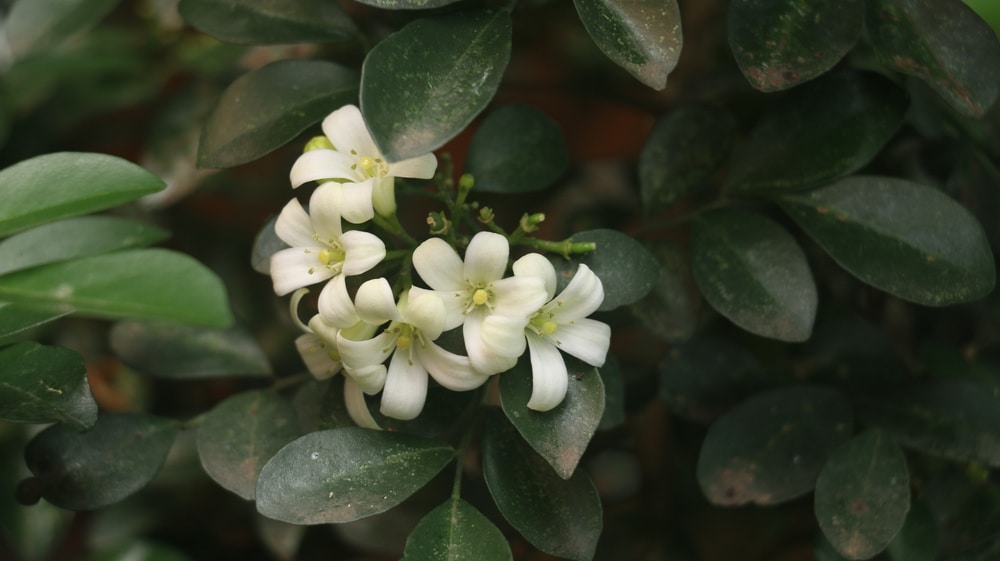
Description: This plant is celebrated for its small, fragrant white flowers and glossy green leaves. You can easily find it in any local nursery.
Climate Suitability: Does well in warm, tropical to subtropical climates and can tolerate mild frosts.
Benefits: Its dense foliage and fragrant flowers are ideal for hedges and privacy screens.
Care and Maintenance: Requires regular pruning to maintain desired shape and dense foliage.
5) Cycads
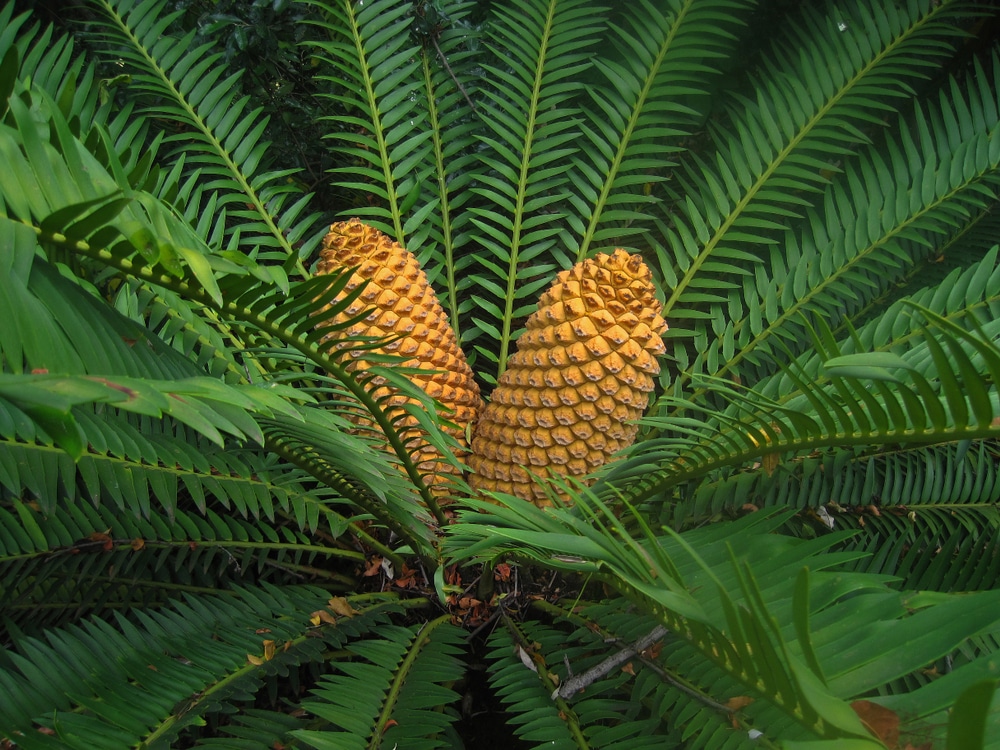
Description: Cycads are ancient, palm-like plants with tough, leathery leaves, adding a prehistoric feel to the garden.
Climate Suitability: Most varieties prefer warm climates but can tolerate cooler temperatures if protected from frost.
Benefits: Their distinctive, sculptural form adds an exotic touch to landscapes.
Care and Maintenance: Thrives in well-drained soil with occasional watering, requiring minimal maintenance. If these conditions are maintained, new growth becomes easy.
6) Camellia Tree
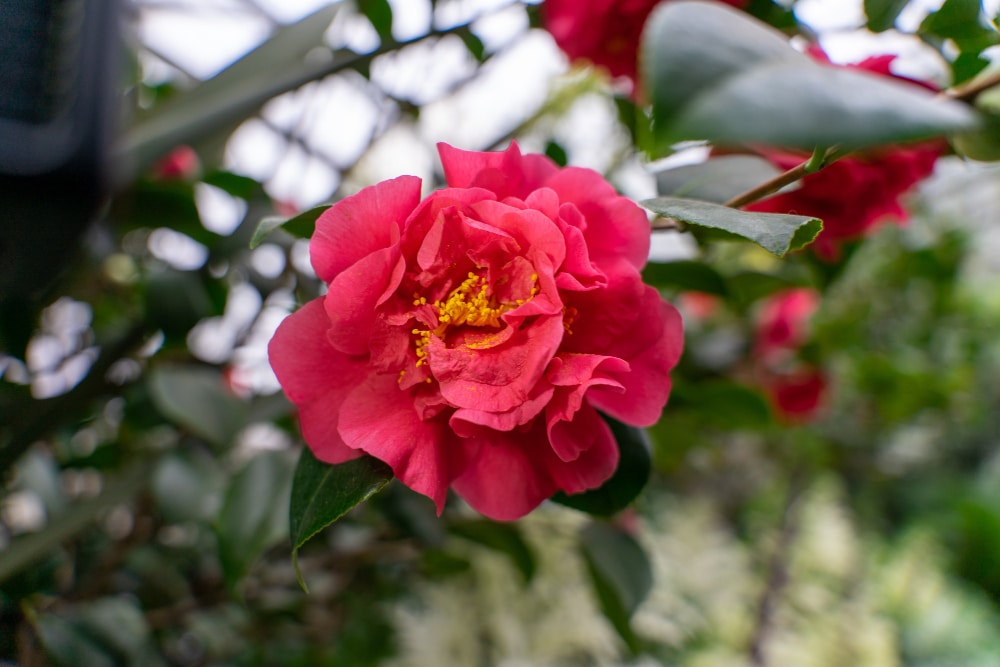
Description: The Camellia tree, renowned for its lush, glossy leaves and exquisite flowers, is a staple in ornamental gardening. Its blooms, ranging from white to deep red, add a touch of elegance and refinement to any setting.
Climate Suitability: Camellias flourish in temperate climates, preferring shelter from extreme cold.
Benefits: Camellias are celebrated not only for their beauty but also for their contribution to biodiversity, attracting a variety of pollinators. Their evergreen nature ensures year-round beauty in the garden.
Care and Maintenance: These trees prosper in acidic, well-drained soil and require regular watering to maintain moisture without water logging. Partial shade is ideal, protecting them from harsh afternoon sun. Pruning after flowering promotes healthy growth and abundant blooms in the following season.
7) Lily turf
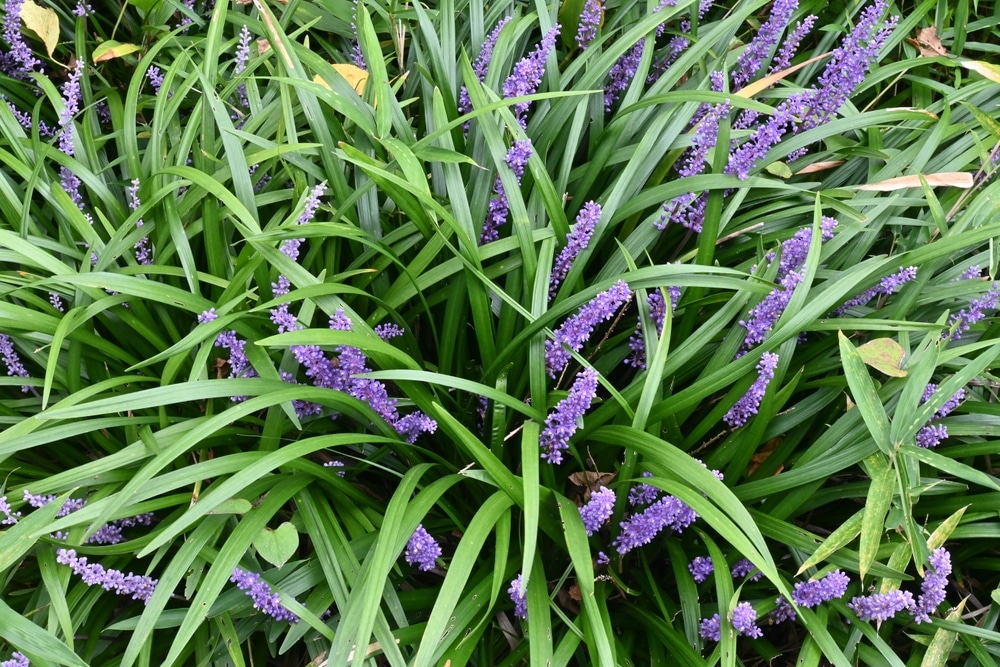
Description: This grass-like perennial is known for its tufted foliage and spikes of purple or white flowers.
Climate Suitability: Adapts well to various climates, from cool temperatures to subtropical.
Benefits: Excellent as a ground cover or border plant, it’s also effective for erosion control.
Care and Maintenance: Low maintenance when planted; thrives in part shade to full sun with occasional watering.
8) Blue Star Creeper
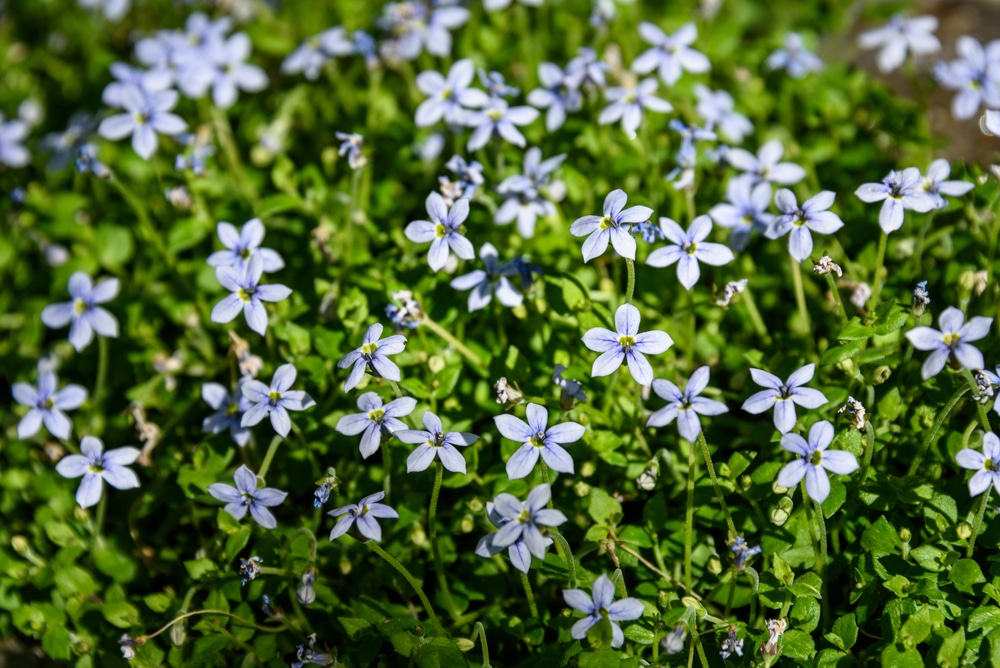
Description: A low-growing, mat-forming perennial with tiny blue flowers, ideal for filling gaps between stepping stones.
Climate Suitability: Prefers temperate climates but can survive in colder areas with some winter protection.
Benefits: Its dense mat of foliage and flowers can create a living carpet effect in the garden.
Care and Maintenance: Requires moist, well-drained soil and can tolerate light foot traffic.
9) Silver Birch
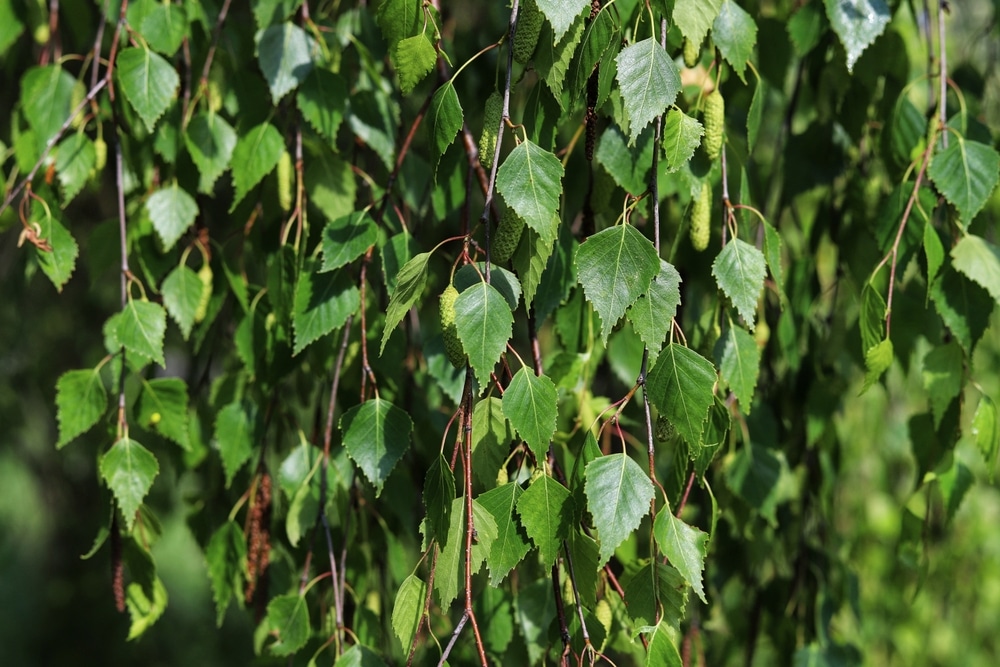
Description: The Silver Birch is a graceful tree, characterised by its slender trunk and delicate, fluttering leaves, creating a light, airy canopy. It typically reaches moderate heights up to 15-20 metres, making it an ideal choice for smaller gardens or as a feature tree in more significant landscapes.
Climate Suitability: This hardy tree adapts well to various climates across New Zealand, from the cooler southern regions to the warmer north. Its adaptability makes it a versatile choice for many garden settings.
Benefits: The Silver Birch is particularly noted for its striking bark, which peels away in layers to reveal varying shades of cream and white. This and its attractive, light green foliage provide year-round interest in the garden.
Care and Maintenance: Once established, the Silver Birch requires minimal supervision, making it a low-maintenance option for busy gardeners. It is tolerant to multiple soil types, although it prefers a moist, well-drained position.
10) Kōwhai
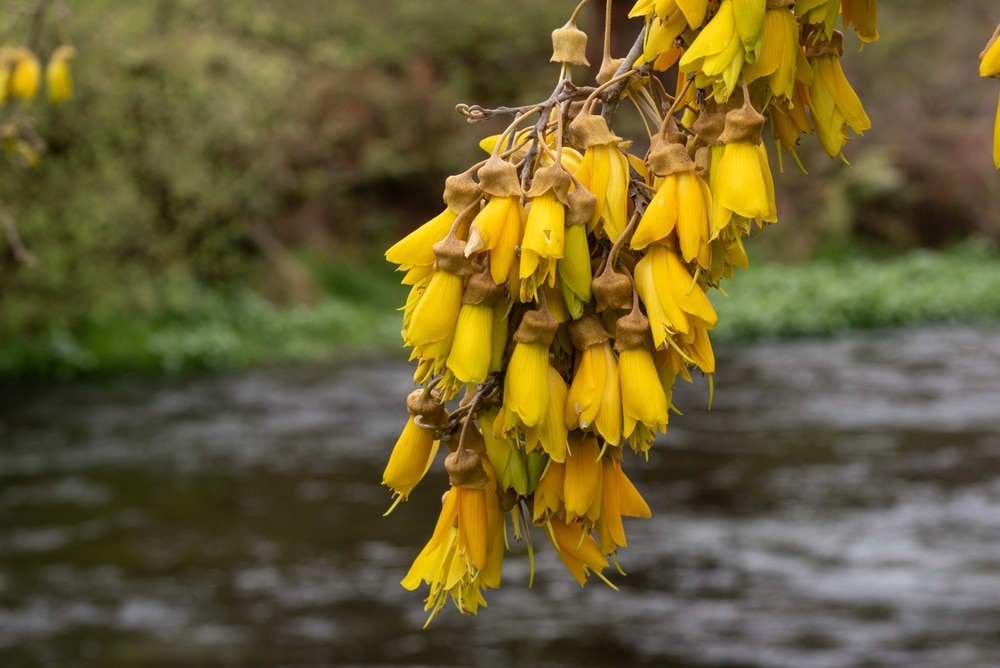
Description: The Kōwhai, a native tree to New Zealand, is renowned for its stunning, golden-yellow flowers that bloom in spring, creating a spectacular display against its dark green foliage. This tree’s elegant, drooping branches add a distinctive touch to any garden space.
Climate Suitability: As a hardy species, the Kōwhai can tolerate various conditions, from coastal environments to inland climates, making it a versatile choice for gardeners across different regions of New Zealand. Its resilience is a critical factor in its popularity.
Benefits: The bright yellow flowers of the Kōwhai are not just visually appealing; they also play a crucial role in attracting native birds, especially the Tūī and Kererū, adding life and natural beauty to the garden environment.
Care and Maintenance: Kōwhai trees prefer well-drained soil and, once established, are known for their drought tolerance, requiring little water. This low-maintenance aspect makes them ideal for gardeners seeking minimal upkeep while providing a stunning visual impact.
Planting Tips for Small Spaces
Proper planting and arrangement are essential in small gardens. Ensure adequate spacing and consider each tree’s sunlight needs and soil preferences.
Grouping trees with similar requirements can make maintenance easier. Vertical elements like tall, slender trees or climbers can add height without using much ground space when designing for limited spaces.
Incorporating varying textures and foliage colours can create a sense of depth and richness in the garden. Choosing multi-functional plants, such as those providing privacy and attractive blooms or foliage, is also beneficial.
Lastly, remember to factor in the mature size of the trees to avoid overcrowding and to ensure a harmonious, balanced garden as they grow.
Conclusion
Choosing suitable trees for small spaces can transform your New Zealand garden into a beautiful, functional space. The trees listed here offer a range of benefits, from stunning visuals to attracting wildlife, making them perfect for gardeners looking to make the most of their limited area.
Additionally, these selections cater to the unique climatic conditions of New Zealand, ensuring not only aesthetic appeal but also resilience and longevity.
By carefully selecting the appropriate species, you can create a thriving, vibrant garden that serves as a personal haven and contributes positively to the local ecosystem.


